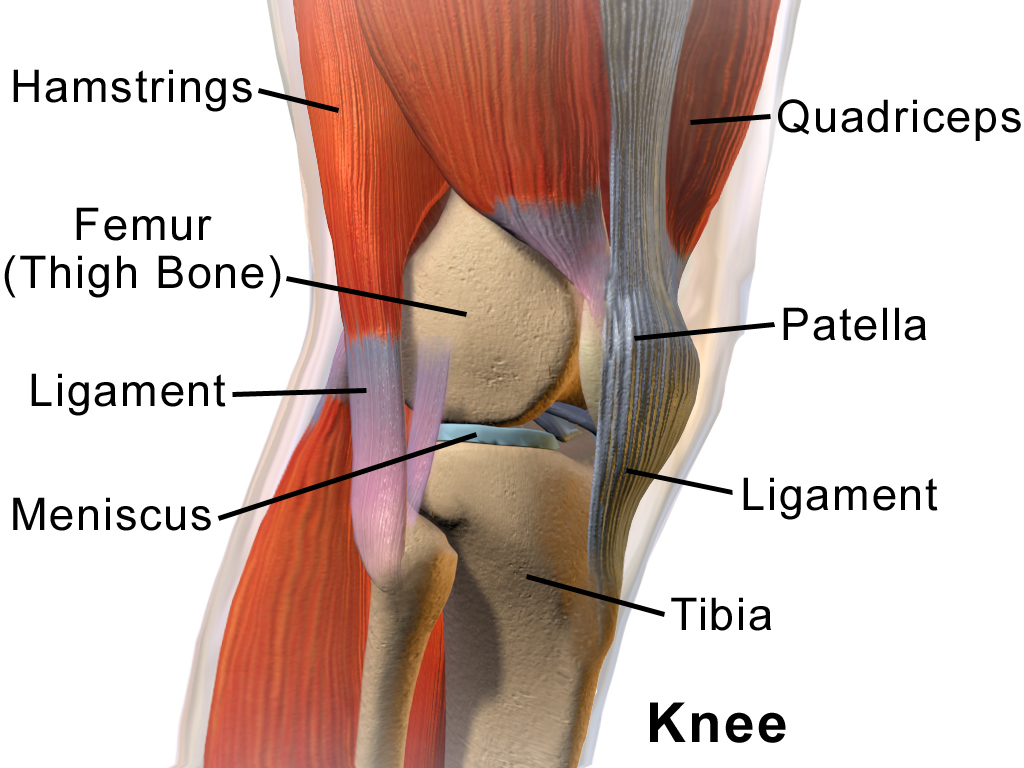Strengthening of hip and core muscle vs. knee muscles for treatment of patellofemoral pain
Posted on 21st March 2017 by Cormac Gallen

This blog is a critical appraisal of a multi-centre randomized controlled trial asking what’s more effective in the treatment of patellofemoral (knee) pain: strengthening the hip and core muscles or strengthening the knee muscles?
Background:
Patellofemoral pain (PFP) can be characterised by an aching type of pain and often stiffness of the peripatellar area (i.e. pain in the front of the knee; Ferber et al, 2015). PFP is an idiopathic condition meaning its onset is insidious; coming on in a gradual manner. PFP has also been called “runner’s knee” because it is common in athletes and people whose chosen form of exercise is running. However PFP has also been known to be exacerbated by other physical activity such as jumping or even everyday activities such climbing stairs, having a considerable adverse effect on the individual’s quality of life.
Typically, the usual treatment of PFP is physiotherapy to strengthen the quadriceps muscles. Ferber et al. (2015) carried out a randomised controlled trial (RCT) comparing the outcomes of individuals with PFP who have been randomly allocated to either a hip- and core-focused or a quadriceps-focused rehabilitation protocol.
How and what they did:

strengthening the knee muscles or strengthening the hip and core muscles: what’s more effective for treating pain in the front area of the knee?
This study was a single blind RCT in which 199 participants were randomly divided into two groups. The interventions studied were strengthening of the hip muscles and core endurance compared with general quadriceps strengthening.
The primary outcome measures of interest were self-reported worst pain in the previous week and self-reported physical function. Pain was measured using the Visual Analog Scale (VAS). The VAS is a self-reporting tool used to measure the level of PFP the patients experience. Patients were asked to score their pain on a scale of 0 (indicating no pain) to 10 (indicating the worst pain). On the VAS, the researchers chose to measure ‘‘worst’’ pain rather than ‘‘usual’’ pain because Crossley et al (2004) suggested this is a more reliable measure. Physical function was measured using the Anterior Knee Pain Scale (AKPS). The AKPS is a self-administered questionnaire with 13 weighted questions regarding knee function. It’s used to measure the patient’s functional activity level. A score of 100 indicates the patient has no disability, so if the patient’s score increases then this indicates improved function.
The secondary variables of interest were muscle-strength measures. The study measured force output of muscles including the hip-abductor and extensor. The front-plank and side-bridge exercises and horizontal-extension test were used to assess core endurance. The outcome data was collected at baseline, throughout each week of rehabilitation, and after the 6-week protocol.
Results:
Following the 6 week rehabilitation protocols, compared with the recorded baseline, both VAS and AKPS improved in both the quadriceps-specific and hip and core groups.
For the primary outcomes, 157 patients out of 199 reported the treatment was successful in the resolution of symptoms based on the priori definition. Broken down, 80.2% of patients who underwent the hip and core protocol reported success and 77% of patients who followed the quadriceps protocol reported success. Notably, patients following the hip and core protocol experienced significant reduction in self-reported pain at week 3 of rehabilitation, whereas patients following the general quadriceps rehabilitation experienced this reduction at week 4.
For the secondary outcomes, both rehabilitation groups experienced an increase in strength. However, patients involved in the hip and core rehabilitation protocol had greater increases in hip abductor and hip extensor force output as well as exhibiting greater improvements in core endurance.
These results can inform clinical practice as they show that both treatment interventions were effective in treating PFP.
Strengths and weaknesses:
The CASP RCT tool will be used to guide the critical appraisal of this study. This study had a clear focus in terms of the population studied, intervention given and outcomes measured.
- Arguably, the primary outcomes are outcomes that are important to patients. Nonetheless, transferability to UK practice must be questioned due to this study being undertaken across 4 locations in America and Canada.
- The rigorous inclusion and exclusion criteria adopted in the screening of participants meant that a representative sample of patients with PFP was obtained. However, research shows that women report feeling pain more powerfully than men, which could indirectly affect the reliability of the findings (Stanford medicine, 2012).
- Statistical analysis was blinded to reduce bias. Intention-to treat analysis was undertaken to take into account the data from all the participants and to avoid overestimation of treatment effectiveness.
- Participants were randomly assigned to treatment groups and the allocations were hidden from the research coordinator to minimise bias and increase internal validity. However, no control group was used, therefore no conclusion can be made that the rehabilitation protocols undertaken were better than no treatment. Additionally, because participants could not be blinded to their treatment group, a placebo effect cannot be ruled out as a cause for success.
Future Research:
If I were to repeat this research study, I would conduct the study on a wider population, including patients in the UK. I would also include a control group (including, for example, patients on a waiting list to receive rehabilitation).
Conclusion:
The results from this study show that both rehabilitation protocols (strengthening of quadriceps and strengthening of hip and core muscles) improved function and strength as well as reducing pain. Patients involved in the hip and core rehabilitation protocol had greater increases in hip abductor and extensor force output along with improvements in core endurance, suggesting that incorporating this alongside a standard quadriceps protocol could improve patient outcomes in clinical practice.
References:
BOLGLA, L.A. and BOLING, M.C., 2011. An Update for the Conservative Management of Patellofemoral Pain Syndrome: A Systematic Review of the Literature from 2000 to 2010. International Journal of Sports Physical Therapy [online]. Vol. 6, no. 2, pp. 112–125. [viewed 22 December 2016]. Available from: http://www.ncbi.nlm.nih.gov/pmc/articles/PMC3109895/pdf/ijspt-06-112.pdf
CRITICAL APPRAISAL SKILLS PROGRAMME (CASP) – MAKING SENSE OF EVIDENCE., 2013. CASP Randomised Controlled Trial Checklist [online]. [Viewed 21 December 2016]. Available from: http://media.wix.com/ugd/dded87_40b9ff0bf53840478331915a8ed8b2fb.pdf
CROSSLEY, K.M., BENNELL, K.L., COWAN, S.M., and GREEN, S., 2004. Analysis of outcome measures for persons with patellofemoral pain: which are reliable and valid Archives of Physical Medicine and Rehabilitation [online]. Vol. 85, no. 5, pp. 815–822. [viewed 22 December 2016]. Available from: http://www.archives-pmr.org/article/S0003-9993(03)00613-0/fulltext?mobileUi=0
DIXIT, S., DIFIORI, J.P., BURTON, M. and MINES, B., 2007. Management of Patellofemoral Pain Syndrome. American Family Physician [online]. Vol. 75, no. 2, pp. 194-202. [viewed 22 December 2016]. Available from: http://www.aafp.org/afp/2007/0115/p194.pdf
FERBER, R., BOLGLA, L., EARL-BOEHM, J.E., EMERY, C. AND HAMSTRA-WRIGHT, K., 2015. Strengthening of the hip and core versus knee muscles for the treatment of Patellofemoral pain: A Multicenter Randomized controlled trial’. Journal of Athletic Training [online]. Vol. 50, no. 4, pp. 366–377. [Viewed 20 December 2016]. Available from: http://www.natajournals.org/doi/pdf/10.4085/1062-6050-49.3.70
PHYSIOWORKS., 2016. Patellofemoral pain syndrome. [online]. [Viewed 21 December 2016]. Available at: http://www.physioworks.com.au/injuries-conditions-1/patellofemoral-kneecap-pain-syndrome.
STANFORD MEDICINE., 2012. Women report feeling Pain more Intensely than Men, says study of electronic records [online]. [Viewed 22 December 2016]. Available from: https://med.stanford.edu/news/all-news/2012/01/women-report-feeling-pain-more-intensely-than-men-says-study-of-electronic-records.html



